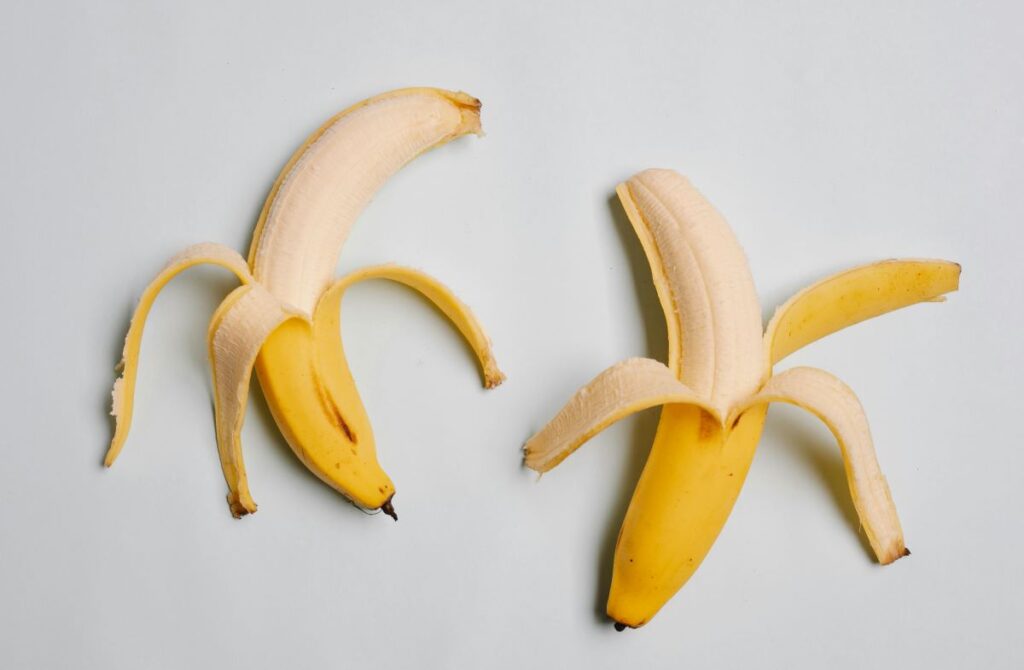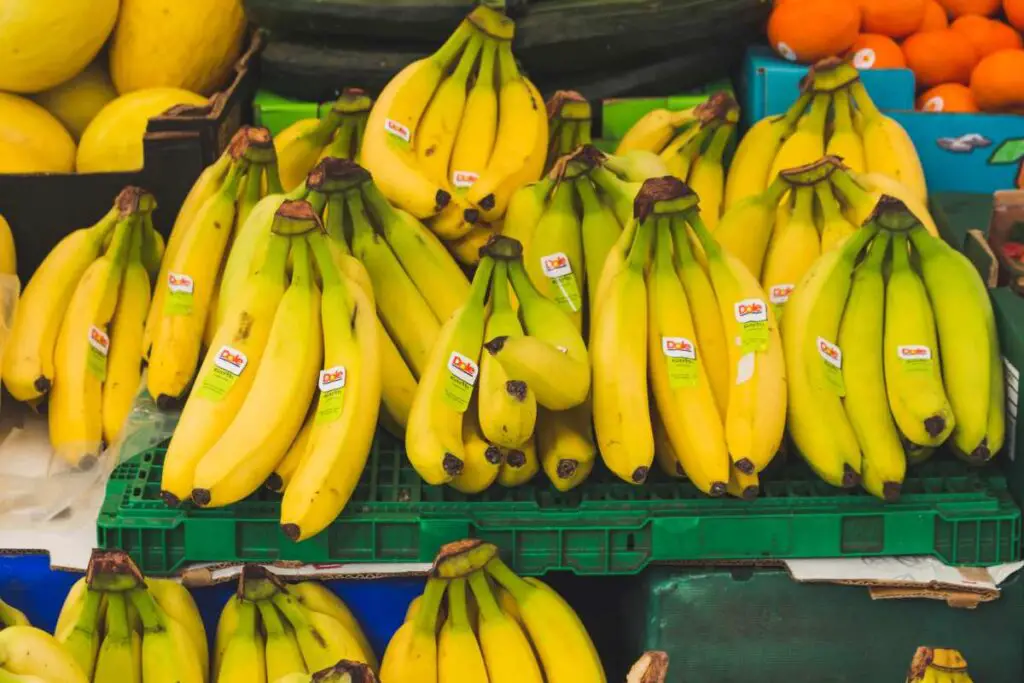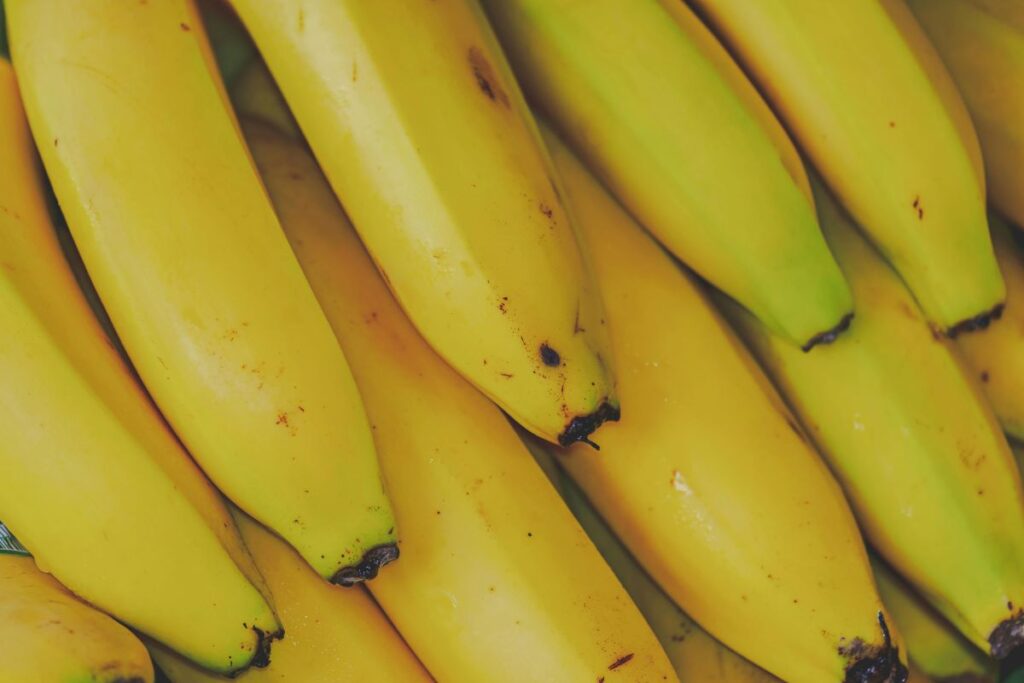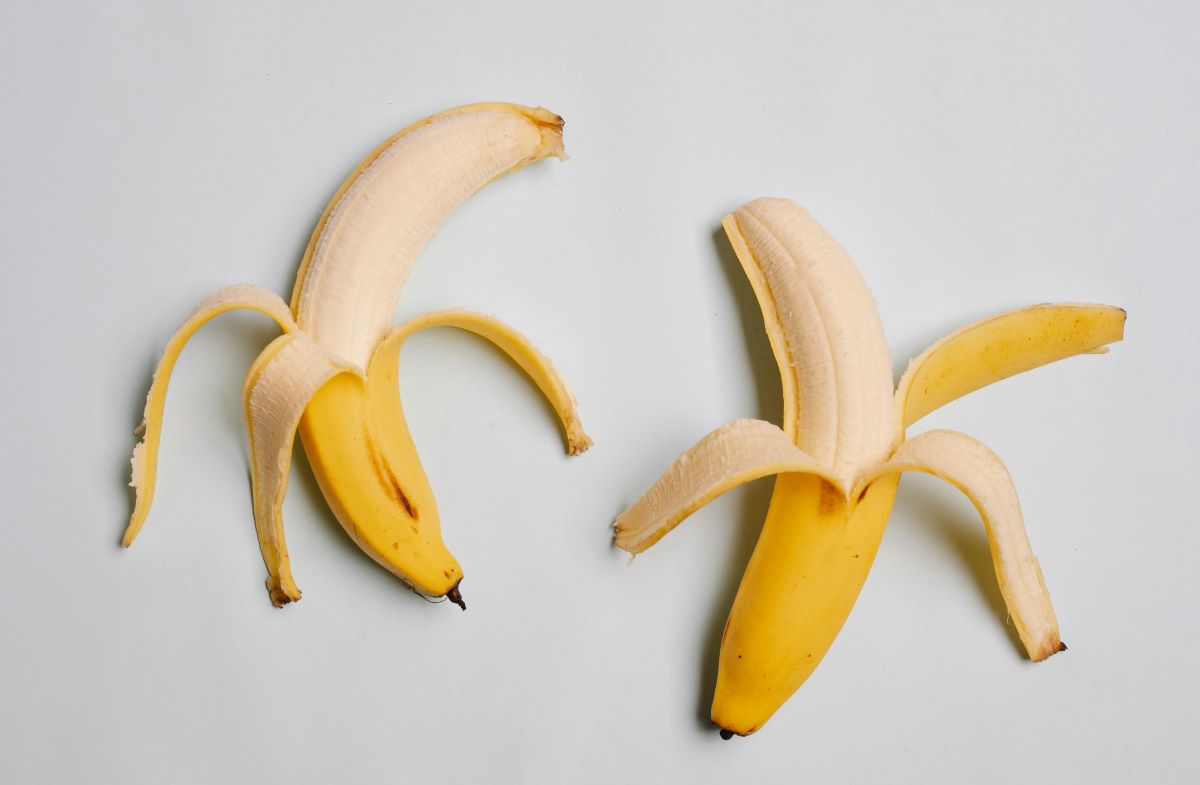Bananas are more than just a fruit. They are a powerhouse of nutrition, flavor, and versatility. Whether you eat them as a quick snack, blend them into smoothies, or bake them into delicious treats, bananas have earned their place in kitchens worldwide. But there’s so much more to this humble yellow fruit than meets the eye.
In this blog post, we’ll explore everything about bananas—from their nutritional value and calorie count to their fiber content, recipes, potential side effects, and more.
By the end, you’ll see why bananas deserve a spot in your daily diet.
Table of Contents
Why Bananas Are a Superfood

A Fruit Loved by All Ages
Bananas are one of the most popular fruits globally. Kids love them because they are sweet and easy to eat. Adults appreciate their convenience and health benefits. Athletes rely on them for energy. Even babies enjoy mashed bananas as one of their first solid foods. So, what makes bananas so special?
Bananas pack a punch when it comes to nutrition. They are rich in vitamins, minerals, and other essential nutrients. They are also low in fat and sodium. Plus, they come in their own natural packaging, making them an eco-friendly snack option.
The Science Behind Their Popularity
Studies show that bananas can support heart health, digestion, and even mood. They contain potassium, which helps regulate blood pressure. They also provide vitamin B6, which is important for brain function. And let’s not forget their fiber content, which aids digestion.
In short, bananas are a superfood. They are affordable, tasty, and good for you. Now, let’s dive deeper into their nutritional profile.
Also Read:
- 10 Health Benefits of Bananas: A Sweet Path to Wellness.
- Are Bananas Bad for Humans? – Who Should Avoid Them?
- Honeydew Melon: Types, Benefits, Side Effects, Nutrition & More.
Nutritional Value of Bananas

Basic Nutrition Facts
One medium banana (about 118 grams) gives you:
- 105 calories
- 27 grams of carbs
- 3 grams of fiber
- 1.3 grams of protein
- Less than 1 gram of fat
- No cholesterol
Key Vitamins and Minerals
Your body gets lots of good things from eating bananas. They have:
Potassium: One banana gives you about 422 mg of potassium. This helps your heart beat normally and keeps your blood pressure healthy. Think of potassium as your body’s natural blood pressure helper.
Vitamin B6: Each banana has about 0.4 mg of vitamin B6. This vitamin helps make red blood cells and keeps your nervous system working well. It’s like a tiny factory worker in your body, helping make important chemicals your brain needs.
Vitamin C: You get about 10 mg of vitamin C from one banana. This helps keep your skin healthy and helps wounds heal. It’s like your body’s repair kit.
Calories in Bananas: Good or Bad?
Are Bananas High in Calories?
Many people worry about the calorie content of bananas. Yes, bananas do have calories—around 105 per medium-sized fruit. But these calories come from natural sugars like fructose, glucose, and sucrose. Unlike processed snacks, bananas give you energy without empty calories.
How Many Bananas Should You Eat?
If you’re watching your weight, portion control is key. Eating one or two bananas a day is perfectly fine. However, eating too many can lead to excess calorie intake. Moderation is always the best approach.
Bananas for Energy
Athletes often turn to bananas for a quick energy boost. Their natural sugars provide fuel for workouts. Plus, their potassium content helps prevent muscle cramps. So, if you need a pre-workout snack, a banana is a great option.
Fiber Content in Bananas: Why It Matters
How Much Fiber Do Bananas Have?
As mentioned earlier, a medium banana contains about 3 grams of fiber. This might not sound like much, but it adds up. Fiber is essential for a healthy digestive system. It also helps you feel full, which can prevent overeating.
Soluble vs. Insoluble Fiber
Bananas contain both soluble and insoluble fiber. Soluble fiber dissolves in water and forms a gel-like substance. This type of fiber helps lower cholesterol levels. Insoluble fiber, on the other hand, adds bulk to your stool and prevents constipation.
Bananas for Gut Health
The fiber in bananas feeds the good bacteria in your gut. These bacteria play a crucial role in digestion and overall health. So, by eating bananas, you’re not just feeding yourself—you’re also feeding your gut microbiome.
Health Benefits of Bananas
Better Heart Health
Eating bananas regularly can help your heart stay healthy. The potassium in bananas helps control your blood pressure. Think of it as a natural way to keep your heart happy.
Easier Digestion
The fiber in bananas helps keep your digestive system running smoothly. They’re especially good when you have an upset stomach. The fiber acts like a gentle broom, helping clean your digestive tract.
Quick Energy Boost
The natural sugars in bananas – glucose, fructose, and sucrose – give you quick energy. That’s why many athletes eat bananas during sports. They’re like nature’s energy bars!
Better Mood
Bananas contain tryptophan, which your body uses to make serotonin – a mood-lifting brain chemical. Eating a banana when you’re feeling down might help you feel better.
When to Eat Bananas
Before Exercise
Eat a banana about 30 minutes before working out. The carbs will give you energy for your exercise. It’s like putting fuel in your car before a long drive.
After Exercise
Having a banana after exercise helps replace nutrients you lost while sweating. The potassium helps prevent muscle cramps.
For Breakfast
Adding a banana to your breakfast gives you energy for the morning. You can slice it on cereal or blend it in a smoothie.
Tasty Banana Recipes
Quick Banana Smoothie
Mix these in a blender:
- 1 ripe banana
- 1 cup milk
- 1/2 cup yogurt
- A splash of honey
- Some ice cubes
Blend until smooth. It’s like having a milkshake, but healthier!
Easy Banana Bread
Here’s a simple recipe:
- 3 ripe bananas (mashed)
- 1/3 cup melted butter
- 1/2 cup sugar
- 1 egg
- 1 teaspoon vanilla
- 1 teaspoon baking soda
- 1/4 teaspoon salt
- 1 1/2 cups flour
Mix everything together. Bake at 350°F for about an hour. Your house will smell amazing!
Banana Pancakes
Mix:
- 2 mashed bananas
- 2 eggs
- 1/2 cup oats
- A pinch of cinnamon
Cook on a warm griddle. These taste great and are good for you too!
Possible Side Effects
Too Much of a Good Thing
While bananas are healthy, eating too many might cause:
Extra Potassium: Most people don’t need to worry about this. But if you have kidney problems, talk to your doctor about how many bananas you should eat.
Higher Blood Sugar: The natural sugars in bananas can affect blood sugar. If you have diabetes, eat bananas as part of your regular meal plan.
Tooth Decay: Like all sweet foods, banana sugar can lead to cavities if you don’t brush your teeth.
Storing Bananas
Keep Them Fresh
Want your bananas to last longer? Here’s how:
- Keep them at room temperature until they’re ripe
- Don’t put unripe bananas in the fridge
- Once ripe, you can put them in the fridge to slow ripening
- Keep them away from other fruits – bananas make other fruits ripen faster
Freezing Bananas
You can freeze ripe bananas for later use. Peel them first, then put them in a freezer bag. They’re perfect for smoothies or banana bread.
Fun Facts About Bananas
Did you know:
- Bananas don’t grow on trees? The banana plant is actually a giant herb
- Wild bananas have big, hard seeds
- There are more than 1,000 types of bananas
- Bananas can help ripen other fruits
- The inside of a banana peel can polish leather
Growing Bananas
While most of us buy bananas at the store, some people grow them at home. Banana plants need:
- Lots of sun
- Rich soil
- Regular water
- Warm weather
- Protection from strong winds
Using All Parts of the Banana

The Peel
Don’t throw away banana peels! You can use them to:
- Feed plants (they’re rich in nutrients)
- Make tea
- Polish shoes
- Soothe bug bites
- Help wounds heal
The Fruit
Besides eating fresh bananas, you can:
- Make banana chips
- Dry them for snacks
- Use them in baking
- Make banana ice cream
- Add them to cereal
Buying Tips
Picking Good Bananas
Look for:
- No bruises or dark spots
- Firm fruit
- Yellow color with some green if you want them to last
- Brown spots if you plan to make banana bread
Ripeness Guide
- Green: Not ready yet
- Yellow with green ends: Will last several days
- All yellow: Perfect for eating
- Yellow with brown spots: Very sweet, good for baking
- Brown: Very sweet, best for banana bread
Environmental Impact
Bananas are pretty good for the environment because:
- They need less water than many fruits
- Their thick peel means less need for pesticides
- They can grow in many places
- They provide food year-round
Frequently Asked Questions About Bananas:
Are bananas good for weight loss?
Yes, bananas can help with weight loss even though they contain natural sugars. Here’s why: they’re filling, provide steady energy, and have only about 105 calories each. The fiber in bananas helps you feel full longer. When you feel satisfied, you’re less likely to snack on less healthy foods. Think of bananas as nature’s portion-controlled snack.
Do bananas cause constipation?
Actually, bananas can help with both constipation and diarrhea, depending on their ripeness. Ripe bananas help ease constipation because they’re rich in fiber. Unripe bananas contain resistant starch, which can slow digestion. The key is knowing when to eat them – choose very ripe bananas if you’re dealing with constipation.
Can diabetics eat bananas?
Yes, people with diabetes can eat bananas as part of a healthy meal plan. While bananas contain natural sugars, they also have fiber which helps slow down sugar absorption. It’s best to pair a banana with protein or healthy fat, like peanut butter, to further slow sugar absorption. Always check with your doctor about the right portion size for your needs.
Why do bananas help with muscle cramps?
Bananas are famous for helping with muscle cramps because they’re rich in potassium, which helps your muscles work properly. When you exercise, you lose potassium through sweat. Eating a banana helps replace this lost potassium. Many athletes eat bananas before or after exercise for this very reason.
How can I keep bananas from ripening too fast?
You can slow down banana ripening by separating them from other fruits and storing them at room temperature until they’re ripe. Once they reach your desired ripeness, you can put them in the fridge. The peel may turn brown, but the fruit inside will stay fresh longer. You can also wrap the stems in plastic wrap to slow ripening.
Are green bananas healthy?
Green bananas are healthy but different from ripe ones. They contain more resistant starch, which acts like fiber in your body. This can help control blood sugar and feed good gut bacteria. However, some people find green bananas harder to digest, and they contain less antioxidants than ripe bananas.
What’s the best time to eat bananas?
The best time to eat bananas depends on your goals. If you’re looking for an energy boost before exercise, try eating a banana about 30 minutes beforehand. On the other hand, if you want to improve your sleep, having one a few hours before bed can be beneficial. Bananas contain tryptophan and magnesium, which help promote relaxation. For better digestion, enjoy a ripe banana with breakfast. This can help get your system moving smoothly throughout the day.
Can babies eat bananas?
Yes, bananas are often one of the first solid foods given to babies. They’re easy to digest, naturally sweet, and can be easily mashed to the right consistency. Start with small amounts when your baby is ready for solid foods, usually around 6 months old. Always check with your pediatrician first.
Are banana peels edible?
While not common in many countries, banana peels are edible and nutritious. They need to be properly cleaned and cooked first. You can boil, fry, or bake them. They’re rich in fiber and nutrients like potassium and vitamin B6. However, make sure to use organic bananas if you plan to eat the peel.
Do bananas cause acid reflux?
This varies from person to person. Ripe bananas are generally considered good for acid reflux because they have a natural antacid effect. However, very ripe bananas might trigger symptoms in some people because they become more acidic as they ripen. Pay attention to how your body responds and adjust accordingly.
Can you eat bananas on a low-carb diet?
While bananas are higher in carbs than some fruits, you can still enjoy them on a low-carb diet – it’s just about portion size. Half a banana might fit into your daily carb allowance. You could also try pairing a smaller portion with high-protein foods to help balance the carb content.
Why do bananas help with heartburn?
Bananas can help with heartburn because they act as a natural antacid. They coat the esophageal lining, creating a protective barrier against stomach acid. Plus, they’re alkaline-forming foods, which means they help neutralize excess stomach acid. Think of them as nature’s antacid tablets.
Final Thoughts
Bananas are a versatile and nutritious fruit. They offer numerous health benefits, from boosting energy to supporting heart health. Plus, they are easy to incorporate into your diet. Whether you eat them raw, blend them into a smoothie, or bake them into bread, bananas are a delicious and healthy choice.
However, like any food, it’s important to enjoy bananas in moderation. Be mindful of their sugar content and potential side effects. With the right balance, bananas can be a wonderful addition to your daily diet.
So, the next time you reach for a banana, remember all the good things it’s doing for your body. Happy eating!

